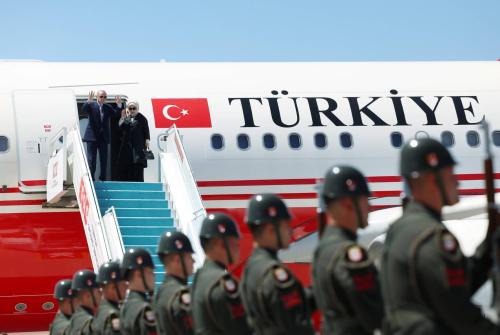Note: Following is a small portion of the event transcript. Please see link at bottom for full transcript.
Q — from Farsi Service of the Voice of America. Thanks very much for your opening statements.
And it was mentioned, and I think it’s a very important point regardless of what regime is in Tehran for the U.S. and Iran and their relations. But I hear here is basically the talk and approach between the Iranian regime, whoever they are, and the American regime or the American people. But I don’t see any mention of — in this equation mention of the Iranian people and Iranian public opinion, which recently is affected strongly by the student movement in Iran, that they have been a vocal and courageous opposition to the regime, and so on. I would like to see how this can be brought into your equation and paid attention to for the sake of future relations.
MS. MALONEY: All right. I always kind of shudder at the notion of Americans trying to interpret Iranian public opinion. We haven’t done the best job of that over the past 50 years or so. And even with the opportunity occasionally to get over and speak to Iranians, I think that we don’t fully understand the wide range of different opinions both on their own political system and on the future of U.S.-Iran relations and what the best way to proceed is.
I agree with your point that, you know, certainly that Iran has a disproportionately young population, three-quarters of whom are under the age of 25 — all those people born, really, since the — born and educated since the revolution, highly literate, highly active, with limited and frustrated economic opportunities — it’s an issue of, I think, a great deal of concern for anyone who, from this position, is looking at what the U.S. should do toward Iran.
I’d also just like to point out — it’s something I raise fairly often — which is that I think, as unsettling as the protests were in July of 1999, and as clear as it was that so many young people in Iran are frustrated with both the situation of the government and the position of the government, particularly on cultural issues, on their ability to kind of move freely in society and intermingle between sexes, I think that what was more interesting to me was that about a year and a half earlier there was a much larger protest in Iran of sorts, and that was the reaction when Iran qualified to play in the World Cup soccer tournament. And in that case, about a million Iranians came out in the streets of Teheran, and more in a number of other large provincial cities, to celebrate and to dance.
And what this says to me is that young Iranians are frustrated, but they’re not ready to go out in large numbers in order to oppose the regime. They’re eager for opportunities to engage with their counterparts, and they’re eager to make their voices heard. But 15,000 people protesting in July of 1999 versus a million coming out to celebrate a soccer match — I think it tells you something about the state of mind of young Iranians.
But I take your point, and I think that once again this really just mandates the reason why we should be talking to Iranians, because, frankly, we have very little way of interpreting what the opinions of young Iranians are from this standpoint.
The Brookings Institution is committed to quality, independence, and impact.
We are supported by a diverse array of funders. In line with our values and policies, each Brookings publication represents the sole views of its author(s).



Commentary
U.S. Policy Toward Iran: Time for a Change?
December 12, 2000